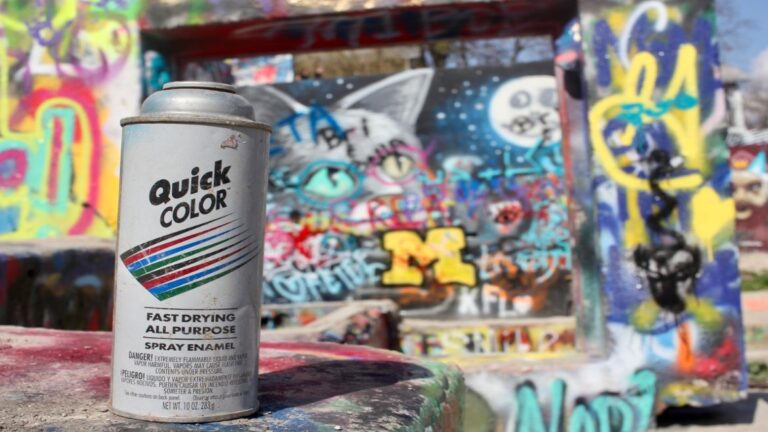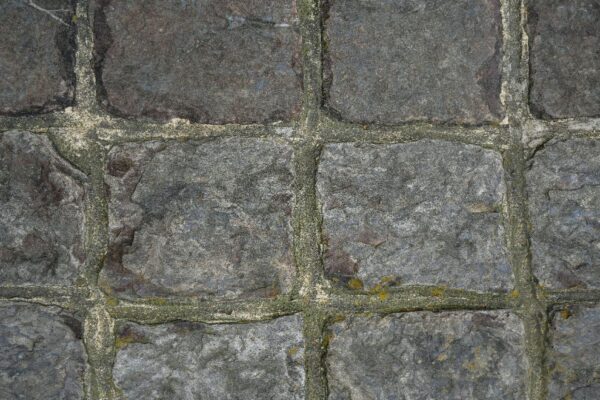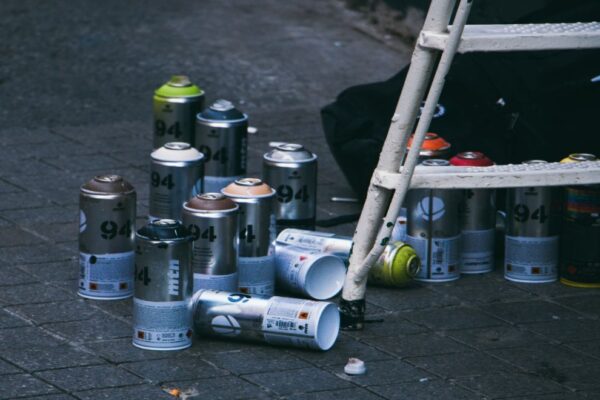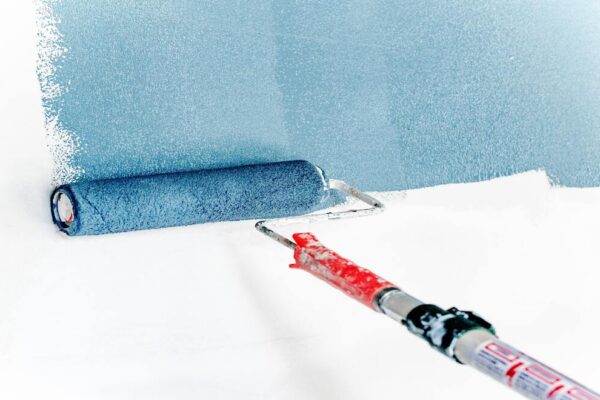Whether it is the result of accidental overspray during a weekend project or the aftermath of vandals, spray paint on a concrete patio, driveway, or sidewalk is an eyesore. There is no reason to be alarmed, regardless of how it occurred. You can learn more about the characteristics of these two materials from this article, which will also walk you through the various techniques for removing spray paint from concrete.
Can You Remove Spray Paint From Concrete?
Concrete can be cleaned of even the most tenacious spray paint. The trick is choosing a paint removal technique that won’t harm your concrete. Grinding paint removal methods should only be used as a last resort.
The reason for this is that they also remove the paint and concrete. It is best to start with procedures designed to remove the paint without harming your concrete.
- No matter how worn-out the paint is now, spray paint can always be removed from concrete.
- If at all possible, choose a technique that removes the paint without removing a layer of concrete.
- Use extra caution when removing paint from finished concrete surfaces; instead of using paint removers that will damage your concrete finish, use soap and warm water.
Start by using soapy water to try to get the paint stain off your concrete floor if it has a stain or sealer on it. Your concrete’s finish will be removed by any paint remover product. It is therefore best to start slowly.
Methods To Remove Spray Paint From Concrete
Method 1: Soap And Water
It is recommended to wash the concrete surface where spray paint has been applied with soap and water. This is true for both water-based spray paints and freshly applied paint.
Additionally, it is worthwhile to try it on dried oil-based paint because you never know how effective it might be.
It is always recommended to start with this approach because it is inexpensive and doesn’t call for any specialized knowledge, though you might need to put in a little extra work.
- Sweep or clean the area to get rid of extra dirt.
- Wear the necessary safety equipment.
- Warm water should be added to one bucket.
- Warm water and a small amount of dish soap should be added to the other bucket. Only enough to create a sudsy solution.
- With the warm, suds-free water, wet the affected area.
- Apply the brush to the concrete that has been spray-painted in circular motions after dipping it in the solution.
- Rinse the area with clean, warm water (or use a hose if outside) after blotting the area with a paper towel to soak up any loose paint.
- Continue doing this until all of the paint has been removed. If inside, finish by giving the area a thorough mop-over.
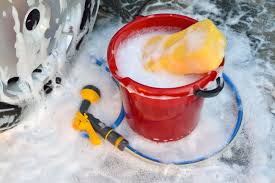
PROS
- Affordable
- Effective in removing certain spray paints
- No heavy machinery required
- No harsh chemicals required
- Eco-friendly
CONS
- Requires elbow grease
- Not effective on tougher spots of dried spray paint
- Not effective on very porous concrete
Method 2: Trisodium Phosphate (TSP)
TSP, also known as sugar soap, is a very potent cleaning agent that has long been the top choice for both interior and exterior cleaning. It is extremely simple to use and has the potential to be very effective at cleaning concrete with spray paint.
- Eliminate extra dirt by sweeping or wiping the area.
- Put on protective clothing and equipment.
- Make sure to follow the TSP in warm water dilution instructions.
- A 1-gallon bucket of fresh, warm water should be set aside.
- Scrub the painted concrete with the solution-dipped brush. You can also scrub the painted concrete, let it sit for 20 minutes, and then scrub it again.
- Rinse the affected area with warm, clean water.
- In order to remove the spray paint, repeat this procedure.
- For thorough final cleaning, use a hose or a mop.
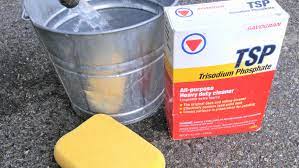
PROS
- Affordable
- Widely available
- Easy to use
- No heavy equipment needed
- No need to hire experts
CONS
- TSP can irritate the eyes and skin
- Not environmentally friendly
- Local restrictions may apply
- Can damage surfaces like glass, steel, and grout
Method 3: Power Wash
For a variety of difficult surfaces, such as concrete, a power washer or pressure washer is an excellent cleaning tool. It also uses a lot less water than a standard garden hose.
The difference between a power washer and a pressure washer is that the former uses heated water in addition to pressure while the latter clean with just pressure.
As you might have guessed, concrete will be easier to remove spray paint from with the additional heat from a power washer.
- Put on safety precautions.
- Use the power washer according to the manufacturer’s instructions for assembly and operation.
- Identify the nozzle you want and attach it.
- Point the sprayer toward one edge of the impacted area while standing 10 feet away.
- Turn on the sprayer, then sweep the concrete in a back-and-forth motion.
- Before you remove the spray paint, clean the affected area.
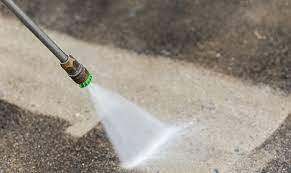
PROS
- Uses less water than a garden hose
- Effective in removing spray paint from concrete
CONS
- Light-duty power washers are less effective than industrial ones
- Industrial power washers are expensive
- You may need to hire a professional
- High-end power washers can be dangerous if not used correctly
Method 4: Paint Stripper Or Solvents
It’s time to pull out the big guns if regular household cleaners simply aren’t cutting it. Spray paint can be softened to make it easier to remove from concrete by using solvents like acetone, paint thinner, denatured alcohol, and turpentine.
However, care must be taken when working with these chemicals as they can be harmful to you and those around you. Paint stripper and other solvents can be very effective at softening paint, making it easier to remove from concrete.
- Sweep or clean the area to get rid of extra dirt.
- Wear safety equipment and make sure the area is well-ventilated.
- As directed on the product label, apply paint stripper or thinner to the affected area.
- After applying, clean the area.
- Use a fresh section of the cloth for each wipe until all of the paint has been removed.
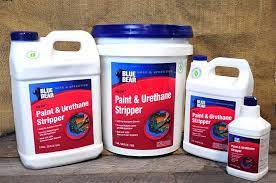
PROS
- Very effective
- Affordable
- Easy to use
- No heavy machinery required
- No professional help required
CONS
- Requires protective equipment to be worn
- Can burn skin
- Toxic fumes
- Can damage concrete coatings
Method 5: Grinding
In particular, if you are unfamiliar with one, using a grinder should only be done as a last resort. While using a grinder to remove spray paint from concrete can be dangerous, it can also be very successful.
Here is a basic how-to that will explain how to do it safely if you decide to try using a grinder. Wear the proper safety gear, such as gloves, a dust mask or respirator, goggles, and protective clothing.
- To get rid of extra dirt, sweep or wipe down the area.
- Put on protective clothing and equipment.
- Sandblaster should be turned on while you are a few feet away from the damaged area.
- Turn on the grinder as you approach the area.
- Apply light pressure with the grinder to the area that has been spray-painted, then move the tool in a clockwise, circular motion across the surface.
- Continue doing this until the paint is gone.
- The resulting concrete dust should be vacuumed up with the wet/dry vac.
- The area can also be thoroughly cleaned with a pressure washer if it is outside.

PROS
- Effective
- No toxic chemicals required
- Easy for someone experienced with a grinder
CONS
- Creates excessive dust
- Not for the inexperienced
- Not ideal for coated concrete
Method 6: Use Graffiti Remover
Try a graffiti remover if soap and water are unsuccessful in removing the graffiti from your surface.
Graffiti removal products use secret ingredients to cut through the paint and reduce the surface adhesion of concrete and other materials.
- Eliminate extra dirt by sweeping or wiping the area.
- If necessary, prepare the area and put on your safety gear.
- To the bucket, add warm water.
- Follow the product’s instructions when applying the graffiti remover. It might be necessary to wait.
- Circular strokes with the brush are applied to the spray-painted concrete.
- With a paper towel or cloth, blot the area.
- Rinse with fresh, warm water (or a hose if you’re outside).
- Till the paint is removed, repeat this procedure. If indoors, finish by giving the area a thorough mop.
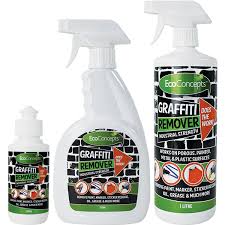
PROS
- inexpensive
- several options to choose from
- effective
CONS
- time-consuming
- you may have to wait up to 20 minutes or more in between applications before scrubbing away the excess paint
- may require several applications.
Tips And Tricks
- Always start with the gentlest techniques before using harsh chemicals or abrasive techniques. This will prevent you from damaging the concrete’s surface.
- Keep a towel close by to dab the area when the paint thinner starts to work if you decided to use paint thinner to remove spray paint from concrete. This is due to the possibility that the paint thinner may quickly melt the paint and cause a mess by dripping into other places.
- Borax is a safe, all-natural substitute for TSP. Borax is a cost-effective alternative that can be just as effective. There are also paint strippers with a soy base that work wonders at getting spray paint off of concrete.
- When a paint stripper is applied to painted surfaces for several hours, great results are obtained. However, it must not dry on the surface because if it does, it might be challenging to remove.
- Using a dust shroud will help reduce the dust when using an angle grinder on concrete. Your neighborhood hardware store ought to have one. To remove dust while you work, a dust shroud is connected to a vacuum cleaner.
- Better to prevent than to treat! Accidental spray painting can be avoided by correctly masking the area before painting. As an alternative, sealing your concrete will not only extend its lifespan but also make cleaning it simpler.
- When you first spill the paint, move quickly to clean it up before it has a chance to dry. This will lessen the amount of effort needed to remove concrete-damaging spray paint.
Read More: How Long Does Spray Paint Take to Dry

